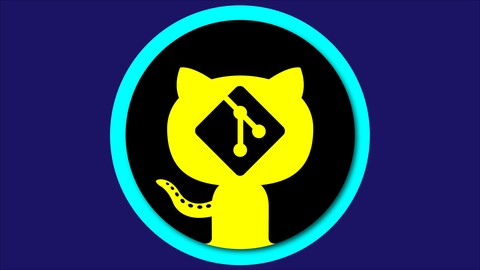
GitHub Ultimate: Master Git and GitHub – Beginner to Expert
GitHub Ultimate: Master Git and GitHub – Beginner to Expert, available at $99.99, has an average rating of 4.48, with 152 lectures, based on 12266 reviews, and has 67893 subscribers.
You will learn about Learn the key concepts of the Git source control system Step through the entire Git workflow Compare the different states in Git Manage files inside and outside the control of Git and GitHub Create and manage repositories on GitHub Create branches and resolve conflicts with confidence Save work in progress with Stashes Mark special events with Tags and Releases Even a bit of time travel within Git repositories and on GitHub Perform many of the same local Git operations directly on GitHub Join other GitHub projects by Forking and contribute back using Pull Requests Review and Accept Pull Requests from Others Share code with Gists Manage project defects or enhancement requests with GitHub Issues Group related repositories together with GitHub Organizations This course is ideal for individuals who are Anyone interested in using source control and specifically Git and GitHub or Software engineers, developers, programmers new to Git or GitHub or IT Managers or technical leads considering Git or GitHub for version control on their team or Freelancers or other creative professionals It is particularly useful for Anyone interested in using source control and specifically Git and GitHub or Software engineers, developers, programmers new to Git or GitHub or IT Managers or technical leads considering Git or GitHub for version control on their team or Freelancers or other creative professionals.
Enroll now: GitHub Ultimate: Master Git and GitHub – Beginner to Expert
Summary
Title: GitHub Ultimate: Master Git and GitHub – Beginner to Expert
Price: $99.99
Average Rating: 4.48
Number of Lectures: 152
Number of Published Lectures: 152
Number of Curriculum Items: 152
Number of Published Curriculum Objects: 152
Original Price: $89.99
Quality Status: approved
Status: Live
What You Will Learn
- Learn the key concepts of the Git source control system
- Step through the entire Git workflow
- Compare the different states in Git
- Manage files inside and outside the control of Git and GitHub
- Create and manage repositories on GitHub
- Create branches and resolve conflicts with confidence
- Save work in progress with Stashes
- Mark special events with Tags and Releases
- Even a bit of time travel within Git repositories and on GitHub
- Perform many of the same local Git operations directly on GitHub
- Join other GitHub projects by Forking and contribute back using Pull Requests
- Review and Accept Pull Requests from Others
- Share code with Gists
- Manage project defects or enhancement requests with GitHub Issues
- Group related repositories together with GitHub Organizations
Who Should Attend
- Anyone interested in using source control and specifically Git and GitHub
- Software engineers, developers, programmers new to Git or GitHub
- IT Managers or technical leads considering Git or GitHub for version control on their team
- Freelancers or other creative professionals
Target Audiences
- Anyone interested in using source control and specifically Git and GitHub
- Software engineers, developers, programmers new to Git or GitHub
- IT Managers or technical leads considering Git or GitHub for version control on their team
- Freelancers or other creative professionals
This course will comprehensively cover the GitHub hosting service as a companion to the Git source control tool, which means no prior knowledge or experience is required. Students will emerge at the end with a very solid understanding and hands-on experience with Git and GitHub.
Course Organization
The course is divided into four major components:
-
Introduction and Setup
-
Learning Git Source Control
-
All About GitHub
-
Bonuses
Each one of the above components spans multiple sections in this course.
New! Video explaining how to resolve Git breaking when upgrading macOS each year
Introduction
The Introduction provides a welcome to the course including some useful tips for getting the most out of taking the course and how the course is designed. That is followed by the Core Concepts which go over some critical theory before diving straight into Git.
After the introduction and core concepts, the first thing we do is a Quick Installation for both Windows and Mac. The Bonus section has a more comprehensive, step-by-step process for those that prefer it.
Learning Git Source Control
In The Basics, we walk through all the foundational commands needed to start a new project managed by Git (or enable Git for an existing project) all the way through making commits, including common file operations like moving and deleting files. We also cover how to exclude the wrong files from accidentally being committed and how to review your repository’s history.
With a strong foundation in place, we explore some more Advanced Git topics like comparing differences, branching and merge resolution, tagging special events, saving work in progress, and even a bit of time travel.
All About GitHub
The main part of this course is all about GitHub. We will explore GitHub indepth from a source control hosting repository perspective.
In Welcome to GitHub we start off exploring some of the basic features of GitHub by creating a fresh repository and associate our local repository with it. Then, we prepare for the remainder of the course by setting up SSH Authentication, which we will use from this point forward. After that, we continue looking at the GitHub Repository, including many of the same operations we performed locally, but done directly within GitHub. Then in GitHub Repository Branches we dive into how Branches on GitHub and our local system work with each other.
After we have comprehensively covered how GitHub repositories work, we focus on how GitHub Tags and Releases work and their relationship with local tags in Git. We can then use tags/releases while Comparing Differences on GitHub.
We start tying things together in Social Coding where we join other projects on GitHub by forking and then submitting our contributions back using pull requests.
Once part of a team, you might use GitHub Issues to track defects or enhancement requests.
Sometimes you just need to share small parts of a file or a set of files, but don’t want to bother with a full Git repository. That where GitHub Gists help out — share just a snip of code or entire files.
Finally, group related GitHub repositories with GitHub Organizations and manage permissions and access using teams.
Bonuses
The bonuses sections and lectures provide additional information, more comprehensive instructions, or non-critical lectures.
Course Features
All tools have installation and configuration sections to ensure no one is left behind.
Presentations provide audio/video training of conceptual ideas. Since few like slide-ware presentations, slide-presentations are kept to a minimum.
Screencasts provide a video of the instructor’s computer system with any actions, commands, or screens displayed and narrated. There is nearly 5 hours of screencast based video training in order to step through each command or action in sufficient detail.
All videos are available in high quality 1080p / Full HD resolution for sharp and clear viewing on modern desktops and tablets.�
Several attachments and document lectures throughout the course provide supplemental information, illustrations, or other reference material.
Moving Forward
This course will expand periodically to include more topics, supporting materials and bonus content! Some content may be in direct response to student feedback or discussions — so get engaged with the course discussions feature!
Course Curriculum
Chapter 1: Introduction
Lecture 1: Course Welcome
Lecture 2: Audience and Approach
Lecture 3: Using The Command Line
Chapter 2: Core Concepts
Lecture 1: Core Concepts Overview
Lecture 2: What is Git
Lecture 3: The Repository
Lecture 4: Commits and Files
Lecture 5: What is GitHub
Chapter 3: Quick Installations
Lecture 1: Quick Installation Overview
Lecture 2: Quick Install on Windows
Lecture 3: Quick Installation on Windows Notes
Lecture 4: Quick Install on Mac OS X
Lecture 5: Quick Install on Mac OS X Notes
Chapter 4: The Basics
Lecture 1: The Basics Overview
Lecture 2: Initialization
Lecture 3: Git States
Lecture 4: First Commit
Lecture 5: Repository and the Git Folder
Lecture 6: Starting with Existing Project
Lecture 7: Commits and Messages
Lecture 8: Commit Details with Log and Show
Lecture 9: Express Commits
Lecture 10: Backing Out Changes
Lecture 11: History and Making New Commands with Alias
Lecture 12: Rename and Delete Files
Lecture 13: Managing Files Outside of Git
Lecture 14: Excluding Unwanted Files
Chapter 5: Advanced: Beyond the Basics
Lecture 1: Advanced Overview
Lecture 2: Comparing Differences
Lecture 3: Branching and Merge Types
Lecture 4: Special Markers
Lecture 5: Simple Branching Example
Lecture 6: Conflict Resolution
Lecture 7: Marking Special Events with Tagging
Lecture 8: Saving Work in Progress with Stashing
Lecture 9: Time Travel with Reset and Reflog
Chapter 6: Welcome to GitHub
Lecture 1: Welcome to GitHub Overview
Lecture 2: Signup for GitHub
Lecture 3: GitHub Profile
Lecture 4: GitHub Settings
Lecture 5: Creating a GitHub Repository
Lecture 6: Linking to our GitHub Repository
Lecture 7: Pushing Changes to GitHub
Lecture 8: Verifying our Changes on GitHub
Lecture 9: Update! GitHub Default Branch Change
Chapter 7: SSH Authentication
Lecture 1: Authentication Overview
Lecture 2: SSH vs HTTPS
Lecture 3: Generating an SSH Key
Lecture 4: Verify SSH Authentication with GitHub
Chapter 8: GitHub Repository
Lecture 1: GitHub Repository Overview
Lecture 2: Starting Remote with a Starter Repository
Lecture 3: Create a Local Copy with Clone
Lecture 4: Seeding the Repository with Sample Content
Lecture 5: Publish Back to GitHub
Lecture 6: Fetch and Pull
Lecture 7: Repository Features and Settings
Lecture 8: Updating Repository and Remote References
Lecture 9: Looking at Files and Folders on GitHub
Lecture 10: Directly Editing Files on GitHub
Lecture 11: Creating a New Files on GitHub
Lecture 12: Creating a New File on Master
Lecture 13: Renaming and Deleting Files on GitHub
Lecture 14: Synchronizing our Changes with our Local Repository
Lecture 15: Reviewing Commits with the Commit List
Lecture 16: Commit Details: Going Deeper
Lecture 17: GitHub Time Travel: Reviwing Your Repository as of a Particular Commit
Lecture 18: Using Commit IDs with the Local Repository
Chapter 9: GitHub Repository Branches
Lecture 1: Repository Branches Overview
Lecture 2: Creating Branches on GitHub
Lecture 3: Local Branches
Lecture 4: Comparing and Pull Requests
Lecture 5: Merging Locally
Lecture 6: Locally Switch to a Branch on GitHub
Lecture 7: Cleaning Up By Deleting Branches and References
Lecture 8: Pull with Rebase
Lecture 9: GitHub Graphs
Lecture 10: Setting the Default Branch
Lecture 11: Dealing with a Conflict while Pulling
Chapter 10: GitHub Tags and Releases
Lecture 1: Tags and Releases Overview
Lecture 2: Local Tags (a bit of Review)
Lecture 3: Pushing Local Tags to GitHub
Lecture 4: Tags on GitHub
Lecture 5: Deleting Tags on GitHub
Lecture 6: Updating Tags: Creating a Floating Tag
Lecture 7: Starting a Release on GitHub
Lecture 8: Deleting a Release
Lecture 9: Creating a Completely New Release
Chapter 11: Comparing Differences
Lecture 1: Comparing Differences Overview
Lecture 2: Comparing with Pull Requests
Instructors
-
Jason Taylor
Lead Software Engineer, Dev Trainer (19 courses,50k reviews) -
John Myers
Rating Distribution
- 1 stars: 120 votes
- 2 stars: 236 votes
- 3 stars: 1498 votes
- 4 stars: 4740 votes
- 5 stars: 5672 votes
Frequently Asked Questions
How long do I have access to the course materials?
You can view and review the lecture materials indefinitely, like an on-demand channel.
Can I take my courses with me wherever I go?
Definitely! If you have an internet connection, courses on Udemy are available on any device at any time. If you don’t have an internet connection, some instructors also let their students download course lectures. That’s up to the instructor though, so make sure you get on their good side!
You may also like
- Best Video Editing Courses to Learn in February 2025
- Best Music Production Courses to Learn in February 2025
- Best Animation Courses to Learn in February 2025
- Best Digital Illustration Courses to Learn in February 2025
- Best Renewable Energy Courses to Learn in February 2025
- Best Sustainable Living Courses to Learn in February 2025
- Best Ethical AI Courses to Learn in February 2025
- Best Cybersecurity Fundamentals Courses to Learn in February 2025
- Best Smart Home Technology Courses to Learn in February 2025
- Best Holistic Health Courses to Learn in February 2025
- Best Nutrition And Diet Planning Courses to Learn in February 2025
- Best Yoga Instruction Courses to Learn in February 2025
- Best Stress Management Courses to Learn in February 2025
- Best Mindfulness Meditation Courses to Learn in February 2025
- Best Life Coaching Courses to Learn in February 2025
- Best Career Development Courses to Learn in February 2025
- Best Relationship Building Courses to Learn in February 2025
- Best Parenting Skills Courses to Learn in February 2025
- Best Home Improvement Courses to Learn in February 2025
- Best Gardening Courses to Learn in February 2025























